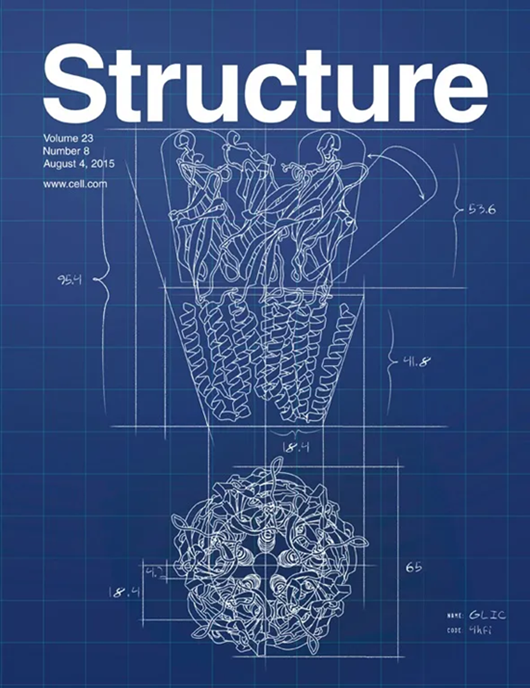STAMBP的MIT结构域自动抑制其去泛素化活性
IF 4.4
2区 生物学
Q2 BIOCHEMISTRY & MOLECULAR BIOLOGY
引用次数: 0
摘要
STAMBP是去泛素酶JAMM家族的一员,专门针对k63连接的多泛素链,在调节活化的细胞表面受体的内体分选中起重要作用。在这项研究中,我们对全长STAMBP和几个片段进行了全面的生化分析,并证明MIT结构域与催化结构域(CD)紧密结合,导致其活性的自抑制。MIT-CD复合物的晶体结构表明MIT结构域占据了CD结构域远端泛素结合位点的很大一部分,从而阻碍了底物的结合。此外,我们的生化数据表明,STAM1与STAMBP结合促进了底物结合并增强了其活性,而与CHMP3结合并不减轻自抑制或增强活性。总之,我们的研究结果揭示了STAMBP通过其MIT结构域的自抑制机制,并进一步揭示了STAMBP、STAM和CHMP在调节STAMBP活性中的关系。本文章由计算机程序翻译,如有差异,请以英文原文为准。

The MIT domain of STAMBP autoinhibits its deubiquitination activity
STAMBP, a member of the JAMM family of deubiquitinases, specifically targets K63-linked polyubiquitin chains and plays a vital role in regulating the endosomal sorting of activated cell surface receptors. In this study, we conducted comprehensive biochemical analyses of full-length STAMBP and several fragments and demonstrated that the MIT domain binds tightly to the catalytic domain (CD), resulting in autoinhibition of its activity. The crystal structure of the MIT-CD complex reveals that the MIT domain occupies a large portion of the distal ubiquitin-binding site of the CD domain, thereby obstructing substrate binding. Additionally, our biochemical data show that STAM1 binding to STAMBP facilitates substrate binding and enhances its activity, whereas binding of CHMP3 does not relieve autoinhibition or enhance activity. In summary, our findings reveal an autoinhibition mechanism of STAMBP via its MIT domain and provide further insights into the relationships between STAMBP, STAM, and CHMP in regulating STAMBP’s activity.
求助全文
通过发布文献求助,成功后即可免费获取论文全文。
去求助
来源期刊

Structure
生物-生化与分子生物学
CiteScore
8.90
自引率
1.80%
发文量
155
审稿时长
3-8 weeks
期刊介绍:
Structure aims to publish papers of exceptional interest in the field of structural biology. The journal strives to be essential reading for structural biologists, as well as biologists and biochemists that are interested in macromolecular structure and function. Structure strongly encourages the submission of manuscripts that present structural and molecular insights into biological function and mechanism. Other reports that address fundamental questions in structural biology, such as structure-based examinations of protein evolution, folding, and/or design, will also be considered. We will consider the application of any method, experimental or computational, at high or low resolution, to conduct structural investigations, as long as the method is appropriate for the biological, functional, and mechanistic question(s) being addressed. Likewise, reports describing single-molecule analysis of biological mechanisms are welcome.
In general, the editors encourage submission of experimental structural studies that are enriched by an analysis of structure-activity relationships and will not consider studies that solely report structural information unless the structure or analysis is of exceptional and broad interest. Studies reporting only homology models, de novo models, or molecular dynamics simulations are also discouraged unless the models are informed by or validated by novel experimental data; rationalization of a large body of existing experimental evidence and making testable predictions based on a model or simulation is often not considered sufficient.
 求助内容:
求助内容: 应助结果提醒方式:
应助结果提醒方式:


